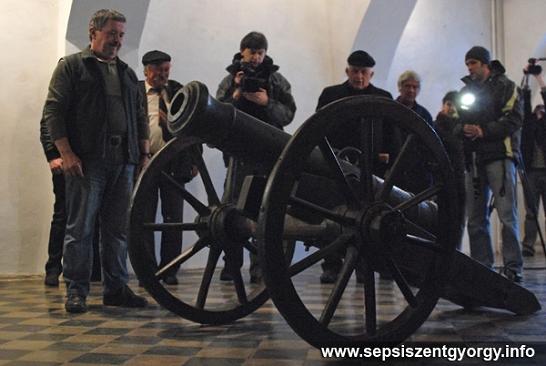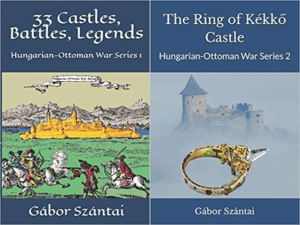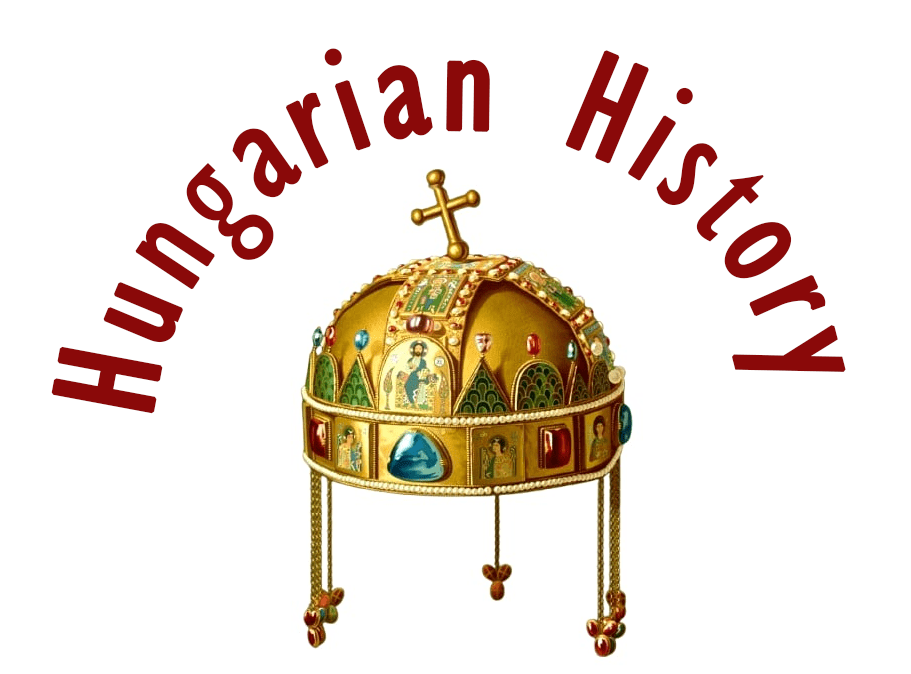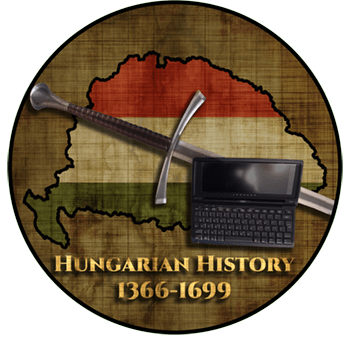I decided to collect the Hungarian soldiers’ military deeds in the 18th and 19th centuries here. We have plenty of heroes who fought on the European battlefields, usually serving the Habsburgs. They deserve to be recognized and honored.
6 May 1757, A Hungarian officer in the Battle of Prague
268 years ago, on 6 May 1757, the first major battle of the second year of the Seven Years’ War was fought under the walls of the Czech capital. The battle was won by Frederick II’s Prussians at great cost. The Prussian king’s narrow victory was short-lived, for a month and a half later, on 18 June, he suffered one of the greatest defeats of his life.
Captain Szent-Iványi György, who was born around 1720 in Székesfehérvár, joined the regiment at the age of 22, fought as an officer during the War of the Austrian Succession, and led a grenade regiment at the beginning of the Seven Years’ War. In the Battle of Leuthen, the year of the Battle of Prague, he was so badly wounded that he was unfit for further service in the field, and was promoted to major in 1767 before retiring from the army.
30 years later, in 1787, a fellow officer put his memories of the Battle of Prague on paper:
“When it came to rifle fire, we were no more than 30 paces from the Prussians. The fire was so fortunately delivered on our part that the enemy’s tight line did not last more than six shots, broke up, and fled, leaving their guns behind. The first to be encountered were enemy grenadiers. Our gunners then put the Prussian guns to use. The second line of the enemy then advanced, but they were also fortunately repulsed, and some guns were again captured, but this line was not so numerous as the first. The grenadiers of Bethlen’s regiment took two flags from the enemy, and captured a lieutenant-colonel, named Platen, who had a white lapel, but I do not remember his regiment.”

With these humble words, Major Szent Iványi recalled how his Hungarian grenadiers defeated the best infantry in the world, the Prussian grenadiers. This was not often the case with the world-famous infantry of Frederick II.
The Queen herself was extremely pleased with the performance of Szent Iványi and his grenadiers, rewarding them with 18 (!) months’ double pay.

The “Birthday of the Monarchy” – with Hungarian help on 18 June 1757
On this day, the Imperial-Royal forces defeated the troops of King Frederick II of Prussia at the Battle of Choline. On 6 May 1757, the Prussians defeated the Austrian forces at Prague and surrounded the city. To relieve the trapped troops, Austrian Field Marshal Leopold Joseph von Daun arrived with his army and took up a strong position east of Prague.

King Frederick attacked the Imperial army without hesitation in the early afternoon of 18 June, but during a bloody battle that lasted until the evening, Daun’s troops held out and gradually overcame the Prussian force, which had been considered unbeatable until then, under the personal command of the strategist Frederick II.

A scene from the Battle of Kolin
Soon, the city of Prague was liberated, and the enemy was driven out of Bohemia. Two Hungarian infantry regiments and almost the entire hussar force of the army, comprising 10 regiments, took part in the battle. The Hungarian soldiers of both regiments and their commanders put up a good fight.

General Leopold Joseph von Daun – Engraving by Johann Gottfried Haid
Empress Maria Theresa called the victory the “second birthday” of the Monarchy. To commemorate the victory at Kolin, she founded the Military Order of Maria Theresa, whose first donors included General Daun and the distinguished leader of the Hungarian cavalry, Count Nádasdy Ferenc.

16 April 1762 Founding of the Székely border guard (later 11th) Hussar regiment
By the middle of the 18th century, the task of the Székelys protecting the eastern borders of Transylvania had changed compared to the Middle Ages. During the Seven Years’ War, Maria Theresa decided to establish a regular military force for the border guard, setting up two Székely infantry regiments and a Hussar regiment in the eastern part of Transylvania.

On 13 October 1761, General Buccow of the Cavalry, commander-in-chief of the Transylvanian army, submitted his proposal for the establishment’s details. In the following months, General Daun, President of the Court Military Council, personally examined it and submitted it to Maria Theresa for approval at 11 p.m. on 14 April 1762. The Queen, the Princess of Transylvania, approved the draft on 16 April 1762, and the regiment was founded on that date.

In the case of the Hussars, the organisation, with the powerful support of Transylvanian and Székely aristocrats and nobles, quickly got started and was completed the following year. At its first muster, the regiment numbered 654 soldiers and the same number of horses.
The Székely Hussars soon became one of the best hussars in the army; their name was feared far and wide, from Jászvásár to Paris, and the regiment fought almost all over Europe in its 156-year history.
The heroic death of Artillery Major Perczel Károly on 17 June 1800
Although the history of the Hungarian artillery starts with the Hungarian National Army in 1848, there were also excellent Hungarian artillerymen in the Imperial and Royal Army before that. One of them was Perczel Károly from Bonyhád, born in 1765, who came from a famous noble family of Tolna. His love and enthusiasm for artillery showed early on; he volunteered to become an artilleryman at the age of 17 in 1782.
After four years of service, he was assigned to the Bombascar, the most prestigious artillery unit of the time, and also its scientific and practical workshop, where he reached the rank of officer two years later. He fought in the last war against the Ottomans and then against the French, and in 1795 was awarded the Knight’s Cross of the Military Order of Maria Theresa.

Perczel was one of the best-trained artillerymen in the army, and his skills were mainly used in sieges. His courage is shown by the fact that he was seriously wounded during the siege of Kehl on 22 June 1796. He served in Italy during the Second Coalition War, playing an important part in the capture of Turin and Alessandria and the great victory at the Battle of Novi, and was promoted to major in 1799, through the personal intervention of the commander-in-chief, Cavalry General Melas.

Still only 36 years old, with his death-defying courage and excellent training, Perczel was in the line of fire at the Battle of Marengo on 14 June 1800 when a French cannonball severed both his legs. The mortally wounded hero was taken to nearby Alessandria, but his life could not be saved, and he died three days later on 17 June 1800.
May 10, 1809: Death of Baron Ott Károly Péter, Lieutenant General in Buda
The Hussars may live in our imagination as death-defyingly brave, fierce, but perhaps undereducated soldiers. In reality, however, this was not the case. In the 18th century, the number of students in civilian and military schools increased, and the education of the officer corps grew markedly. One of the best military schools in Europe, the Academy of Engineering in Vienna, was run by the Habsburg Monarchy.
It was here that Ott Károly Péter, born in Esztergom around 1738, studied. After a short three years’ service as an infantryman, he became a hussar officer in 1759, serving as a hussar until his promotion to major-general in 1793. He fought with honour in all the wars of the period, and during the French Revolutionary Wars, he was stationed in the German Lowlands, on the Rhine, and in Italy.

In the last Ottoman war, as a lieutenant colonel of the Archduke Alexander Leopold (later 2nd) Hussars Regiment in the Battle of Calafat in 1788, he earned the Knight’s Cross of the Military Order of Maria Theresa, and then the Command Cross awarded to him for his quite outstanding achievements as a division commander in the 1799 Italian campaign. In his highest position, he was deputy commander-in-chief of the Hungarian army from 1801 to 1806. He retired in 1806, but in 1809, during the Insurrection, he returned to active service, a worthy warrior in broken health. It was during this service that he died in Buda.
Ott Károly Péter was one of the most distinguished Hungarian generals of the French wars, who combined the greatest Hungarian military virtues of heroism, cunning, perseverance, excellent education, and the most importantly, patriotism.
22 May 1809 The deed of Ensign Gorzay János at the Battle of Aspern
On 21-22 May 1809, the Battle of Aspern was fought, Napoleon’s first major defeat in open battle. Napoleon’s troops attacked the Imperial and Royal Army, led by Archduke Charles, stationed on the Morava River, by crossing the Danube. Still, the flooding of the Danube and the actions of Austrian engineers broke the bridge over the river, allowing Archduke Charles to attack the French army on the other bank with an overwhelming force.

The battle was fought over the possessions of two villages, Aspern and Essling. In the column attacking Essling, we find the 13th Frontier Regiment, which was organised from the south-eastern part of the Temesköz region of Hungary. The village and a large granary were fiercely fought over, captured several times by Imperial-Royal troops and then retaken by the French.
The regiment held out heroically. Flag-bearer Gorzay János carried his flag in front of the troops, inspiring the soldiers and setting an example of heroic courage, even in the greatest danger. Esslingen was finally captured by the Imperial-Royal soldiers.
For his military deed, Gorzay János was awarded the Silver Medal of Valour.
Source: HM Hadtörténeti Intézet és Múzeum and https://www.lovecpokladu.cz/de/
Dear Readers, I can only make this content available through small donations or by selling my books or T-shirts.
Please, support me with a coffee here: https://www.buymeacoffee.com/duhoxoxa
You can check out my books on Amazon or Draft2Digital. They are available in hardcover, paperback, or ebook:
https://www.amazon.com/dp/198020490X or at https://books2read.com/b/boYd81

My work can also be followed and supported on Patreon: Become a Patron!http://Become a Patron!
Become a Patron! Donations can be sent by PayPal, too: https://tinyurl.com/yknsvbk7


https://hungarianottomanwars.myspreadshop.com/all
Subscribe to my newsletter here: https://tinyurl.com/4jdjbfkn


